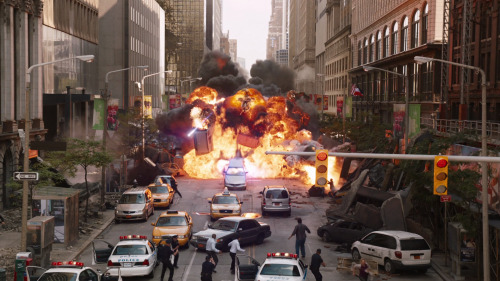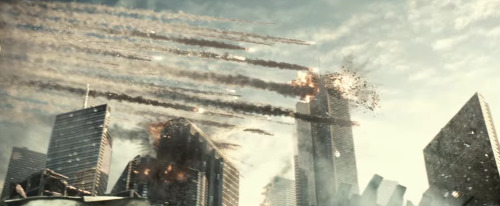
"THE THREE MUSKETEERS" (2011) Review
Recently, I became aware of the BBC series called "THE MUSKETEERS" and became an instant fan. Due to my renewed interest in Alexandre Dumas père's work, I decided to focus my attention on 2011's "THE THREE MUSKETEERS", the most recent adaptation of the author's 1845 novel.
Produced and directed by Paul W.S. Anderson, this cinematic version of Dumas père's novel, proved to be a different kettle of fish. Yes, screenwriters Andrew Davies and Alex Litvak managed to adhere to some aspects of the 1845 novel. The movie closely followed d'Artagnan's first meeting with his future three friends - Athos, Aramis and Porthos - along with Captain Comte de Rochefort and Milady de Winter. The rivalry between the Musketeers and Cardinal Richelieu's guard - led by Rochefort - remains intact. "THE THREE MUSKETEERS" also included a conspiracy created by Richelieu that centered around Queen Anne, Britain's Duke of Buckingham and the former's diamond necklace given to her by King Louis XIII.
But Davies and Litvak created changes to Dumas' story. One, Milady de Winter begins the story working with the three musketeers to steal airship blueprints created by Leonardo da Vinci. In this scenario, Milady and Athos are long time lovers and not a married couple. Their antipathy begins when Milady betray her compatriots and gives the plans to Britain's Duke of Buckingham. Her betrayal leads to the disbandment of the Musketeers. So, when d'Artagnan arrives in Paris to join the military unit, he is a year too late. Also, the Duke of Buckingham is portrayed more as a villain, since he is not The Constance Bonacieux is not only single in this story, but also one of the Queen's ladies-in-waiting; instead of married and a royal seamstress. Also, there is no real affair between Queen Anne and Buckingham. But Cardinal Richelieu decides to create false rumors using the Queen's diamond necklace and false love letters in order to discredit her. This would lead to Anne's execution, a war against Britain and a demand by the people that a more experienced leader - namely Richelieu himself - would rule France. Alas, thanks to Constance, d'Artagnan and the Musketeers step up to save the Queen's reputation and ruin Richelieu's plans.
It would be difficult for me to deny that "THE THREE MUSKETEERS" is a beautiful looking film. Germany served as 17th century France and Great Britain in this film and Glen MacPherson really did justice to the shooting locations, thanks to his beautifully sharp and colorful photography. MacPherson's photography also did justice to Paul D. Austerberry's production designs, whose re-creations of 17th century France and England struck me as spot on. Both MacPherson and Austerberry's work benefited from Philippe Turlure's set decorations and the art direction team of Nigel Churcher, Hucky Hornberger and David Scheunemann. But what really dazzled me about "THE THREE MUSKETEERS" were Pierre-Yves Gayraud's s costume designs. Personally, I found them worthy of an Oscar nomination. Below are three images just to prove my point:



There are aspects of "THE THREE MUSKETEERS" that did not exactly impress me. First of all, the chemistry between the four leads seemed a bit off. One might blame Logan Lerman, who was the only American in the team. But I had no problems with his chemistry with both Matthew MacFadyen and Ray Stevenson. And Luke Evans had a nice chemistry with both MacFadyen and Stevenson, despite his subdued take on his role. And I cannot blame MacFadyen, who seemed to be the odd man out as a screen swashbuckler. I am not saying that all four men - Lerman, MacFadyen, Evans and Stevenson - had no chemistry whatsoever. There was some inclination of a screen chemistry. But . . . their chemistry as the four musketeers never struck me as dynamic than in other versions I have seen.
Another major problem I had with the movie proved to be Davies and Litvak's re-writing of the Milady de Winter character. I had no problem with Milady starting the movie as colleague of Athos, Aramis and Porthos. I had no problem with her being Athos' lover, instead of his estranged spouse. I did have a problem with Milady being written as some kind of action woman. Many of her scenes featured actress Milla Jovovich engaged in some acrobatic stunt at a great height. I understand why. Both Jovovich and Anderson (who are married, by the way) are known for the "RESIDENT EVIL" movies, in which the actress had starred as the main protagonist. For some reason, the couple and the two screenwriters seemed to believe it was necessary to transform Milady into a female action figure. In doing so, all four robbed the Milady of the subtle villainy that made her such a memorable character in the novel and in other adaptations. I almost got the impression that Anderson and the screenwriters did not believe Jovovich lacked the ability to portray a seductive and manipulative villainess. Yet, one scene between Jovovich and actor Christoph Waltz (who portrayed Cardinal Richelieu) made it clear to me that the actress could have been a very effective Milady de Winter without resorting to countless number of stunts and other action scenes. Hmmm . . . pity.
Despite these misgivings, I must admit that I enjoyed "THE THREE MUSKETEERS". Much to my utter surprise. When I first saw the film, I was ready to reject it after the Venice sequence. The idea of Milady working with Athos, Aramis and Porthos on a mission in Venice was not how I recall previous adaptations of Dumas' novel. But I gave it a chance and decided to finish the film. And I enjoyed it. Actually, there were aspects of the movie that made it enjoyable for me. Aside from the movie's visual style and costumes, I enjoyed how Davies and and Litvak put a different spin on Dumas' story arc about Queen Anne's diamond necklace. I was also both surprised and impressed at how they utilized the heist movie trope in two major sequences - the opening scene in Venice and the Musketeers' attempt to get their hands on the diamonds, which were stolen by Milady and planted inside London's Tower of London.
Davies and Litvak's screenplay displayed a nice sense of humor. This was apparent in the personalities of three major characters - Porthos (who has been the comic relief of nearly all versions of Dumas' tale), King Louis XIII and surprisingly, the Duke of Buckingham, along with d'Artagnan's first meetings with his future three friends. The movie also featured some excellent action sequences. My favorite include the Musketeers and d'Artagnan's fight against Rochefort and the Cardinal's guards, the four friends' heist of the diamond necklace from the Tower of London, and their final showdown against Rochefort and his men upon their return to Paris. This last sequence featured an outstanding duel between d'Artagnan and Rochefort that in my opinion, rivaled the duel between the two characters in 1974's "THE FOUR MUSKETEERS".
I still stand by my belief that the chemistry between the four actors who portrayed the Musketeers and d'Artagnan was not as strong as it had been in other productions. But the movie did featured some solid performances from the four actors. Ray Stevenson displayed his usual talent for comedy in his performance as Porthos. Honestly, I think his comic skills are highly underrated. Luke Evans gave a decent performance as Aramis. However, I do wish he could have displayed a little more élan in his portrayal of the usually dashing womanizer. Matthew Macfadyen did a skillful job in portraying Athos' brooding nature and role as the group's leader. But I got the feeling that he was not the type of actor I would cast in a swashbuckling film. Of the four actors, he never struck me as the swashbuckling type. It is odd that I would say this about Macfadyen and not Logan Lerman, who portrayed d'Artagnan. But the thing about Lerman is although his looks strike me as mediocre and he seems to be the shortest of the four leads. Yet, once he opens his mouth and move, he becomes a bundle of energy with a good deal of style and panache. Curious.
Despite my complaints by Anderson and the screenwriters' attempt to turn Milady de Winter into an action queen, I must say that I still managed to enjoy Milla Jovovich's performance. She is the only actress I know who conveyed the spy's seduction skills with a good deal of sly humor. Christoph Waltz did a solid job as the villainous Cardinal Richilieu. But I must admit, I did not find his performance particularly memorable or energetic. I can also say the same about Gabriella Wilde, who portrayed Constance Bonacieux. I hate to say this, but I found her performance somewhat wooden. On the other hand, Juno Temple gave a very charming performance as Queen Anne (formerly of Austria). Not only did she give a charming performance, she also conveyed a good deal of the Queen's strength of character.
I really enjoyed Mads Mikkelsen's portrayal of Captain Rochefort. The Danish actor did an excellent job of conveying Rochefort's subtle menace and talent for intimidation. Orlando Bloom proved to be quite a surprise as the villainous Duke of Buckingham. He was very funny in a sly, yet theatrical way. James Corden also gave a funny performance as Planchet, the Musketeers' long suffering manservant. But the funniest performance came from Freddie Fox, who portrayed the rather young King Louis XIII. What can I say? He was hilarious in his portrayal of the King's insecure nature and lack of experience as a leader. In fact, I believe he gave the best performance in the movie.
What else can I say about "THE THREE MUSKETEERS"? It is not particularly faithful to Alexandre Dumas père's novel. But to be honest, I do not really care. In my opinion, the movie's lack of adherence to the novel was not a weak point. The worst I can say about the movie is that the chemistry between the four actors portraying the Musketeers was not particularly strong. I did not care for the use of 17th century airships in this story. And I was not that impressed by the movie's tendency to portray Milady de Winter as an action figure. On the other hand, I still managed to enjoy the screenplay written by Andrew Davies and Alex Litvak, along with Paul W.S. Anderson's direction. And the movie also featured some strong performances - especially from Logan Lerman, Juno Temple, Orlando Bloom and Freddie Fox. In the end, I still enjoyed the film, despite my initial reservations.































































